

Our go-to guide for teaching kids how to count money from coin and note value to counting techniques that’ll support them every step of the way.

Author
Mhairi
Published
March 2025


Key takeaways
Counting money is an essential skill that we are taught at school and that we rely upon throughout our lives. Learners will start learning how to count money as early as Year 1.
Read on to discover what kids need to know as they learn to count money and explore some helpful strategies to support learning!
Counting from 0 to 100 is an essential skill for counting money. As there are 100p in each £1 they’ll need to be familiar with these numbers!
When it comes to money counting up in larger increments can be helpful. Skip counting allows learners to count groups of 2p, 5p and 10p coins faster. For example, if they are counting five 2p coins, it’s easier to count in 2s.
Once familiar with their counting concepts, kids are ready to learn the value of the coins and notes.
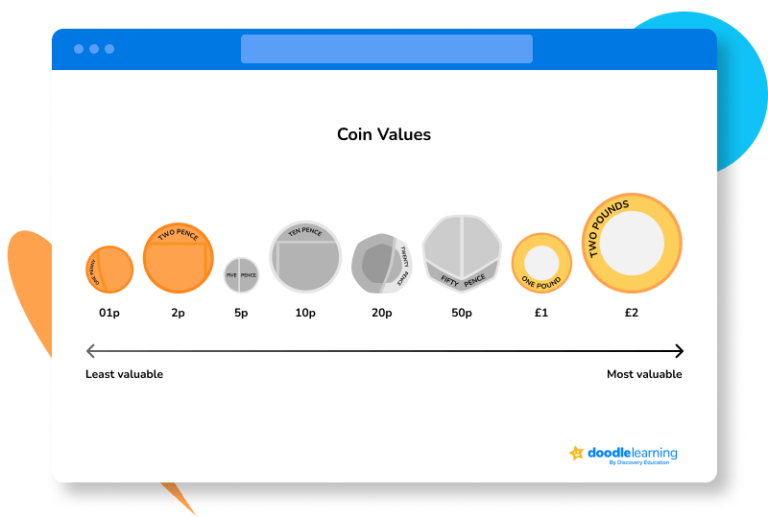
A key point when teaching children about the different coins is that their value is not linked to the size, shape, or colour.
The most valuable coin is the £2 coin and the least is the 1p coin.
Kids will learn that there are 100p in £1 and that each of the other coins represents a value of pennies (e.g. 50p = 50 x 1p). When learning how to count coins it’s also helpful for them to know how many of each type of coin add up to £1.
1p x 100
2p x 50
5p x 20
10p x10
50p x 5
50p x 2
£1 x1
£5, £10, £20, £50
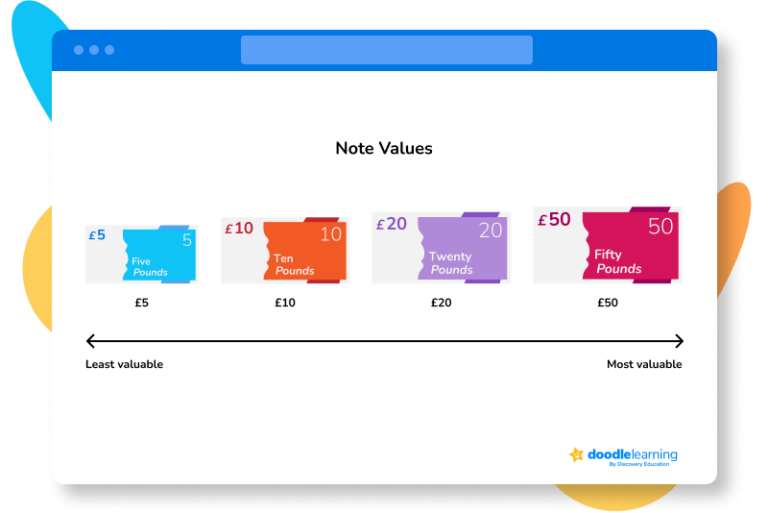
Unlike coins, notes do increase in size as they increase in value.
Unlock unlimited maths questions
Put your skills to the test with fun exercises + maths games that are proven to boost ability!
Try DoodleMaths for free!
Select a year group
Money is counted in pounds and pence, so exploring the different coins and their equivalent value in pennies is a great starting point when counting coins.
Once they’re comfortable with this concept they’ll explore more equivalent values. For example, one 5p coin is worth the same as two 2p coins and one 1p coin.
In coin counting, learners must understand that the number of coins in a group differs from the value of those coins.
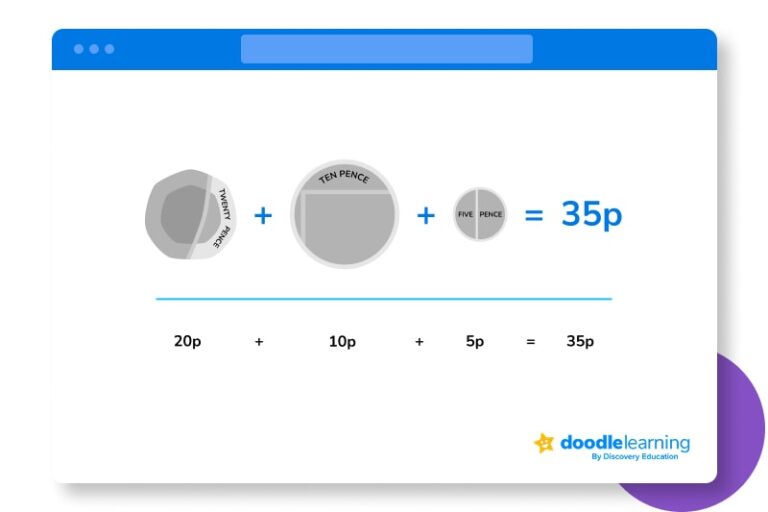
Counting notes is usually easier for our kiddos because they only need to work with pounds.
As with the coins, it’s helpful for kiddos to understand how larger denominations of notes can be broken down into smaller ones. For example:
£50 = £10 + £10 + £10 + £10 + £10 or £20 + £20 + £10
Eventually, learners will complete money counting problems where they must count coins and notes together. Let’s explore the steps involved with the example below.
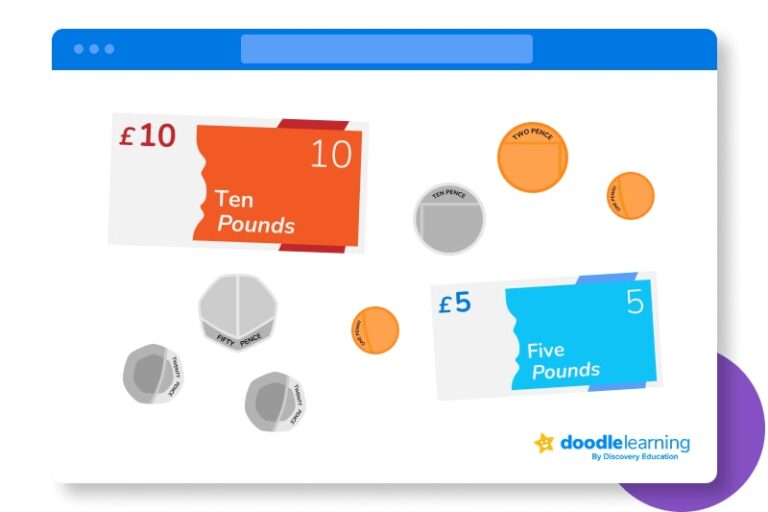
Step 1: Count notes
Start by sorting all the notes from most valuable to least, then add these together.
£10 + £5 = £15
Step 2: Count coins
Next, organise and add the coins, starting with the largest denomination.
50p + 20p + 20p + 5p + 2p + 1p + 1p = 99p
Step 3: Convert coins into pounds and pence
In cases like this when coins don’t add up to an even pound, convert from pence to pounds. To do this, we divide our number by 100, sliding the numbers two places to the right. For example, 99p becomes £0.99.
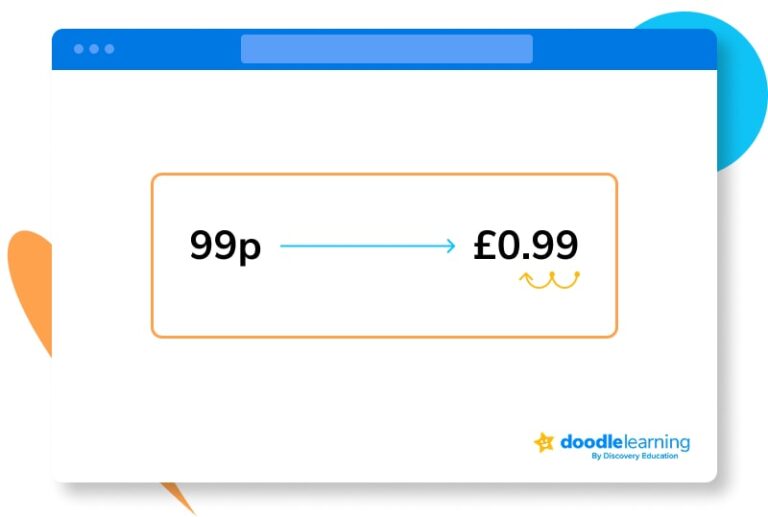
Step 4: Add together
Finally, add your note total and coin total together.
£15 + £0.99 = £15.99
Organising coins and notes in an order based on their value is a strategy called grouping. This helps keep track of all the coins and notes when counting and makes it easier to add up the values.
Counting on is another helpful strategy. When adding up the different amounts start with the largest denomination and count on each next coin or note to reach your total.
Your learner can practice these money-counting strategies and more with a personalised learning programme on our Doodle Learning maths app. With thousands of fun, interactive games and activities to complete, they’ll be counting money confidently in no time!
Unlock unlimited maths questions
Put your skills to the test with fun exercises + maths games that are proven to boost ability!
DoodleMaths is an award-winning app that’s filled with thousands of questions and games exploring multiplication, division and more!
Designed by teachers, it creates each child a unique work programme tailored to their needs, doubling their progression with just 10 minutes of use a day.* Try it for free!

*Based on earning 24 stars a day in DoodleMaths. Read the full study here.

1. Using the coins below, find three different ways to make 60p.
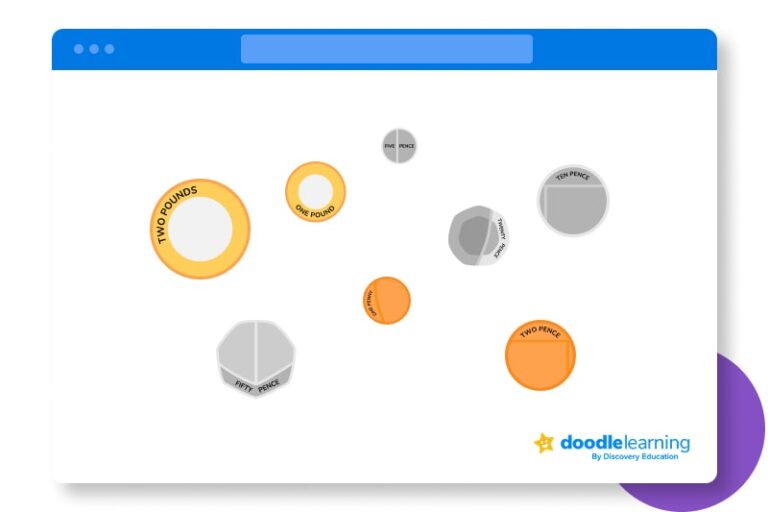
2. How much money is shown below?
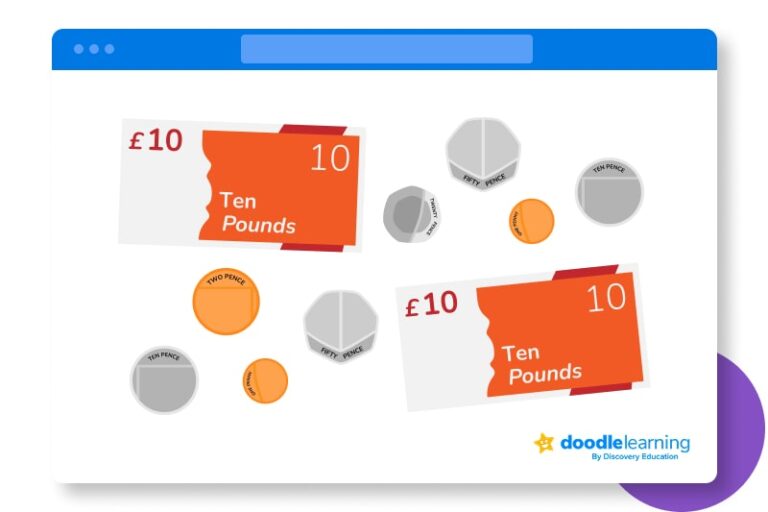
3. How much is 3418p in pounds and pence?
4. Bigger notes and coins are worth more than smaller notes and coins. Is this true or false?
5. Is the total value of the coins in column A the same as the total value of the coins in column B?
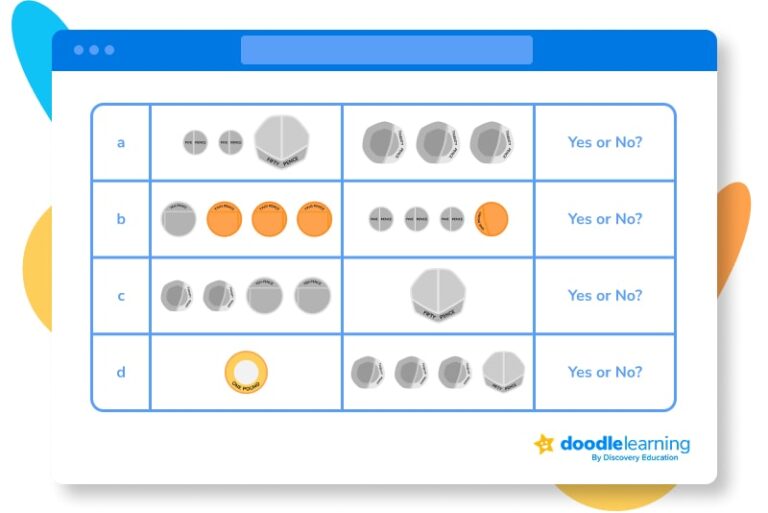

Parents, sign up for a DoodleMaths subscription and see your child become a maths wizard!

Book a chat with our team
If you’d like to use Doodle’s browser version, please visit this page on a desktop.
To log in to Doodle on this device, you can do so through our apps. You can find out how to download them here: